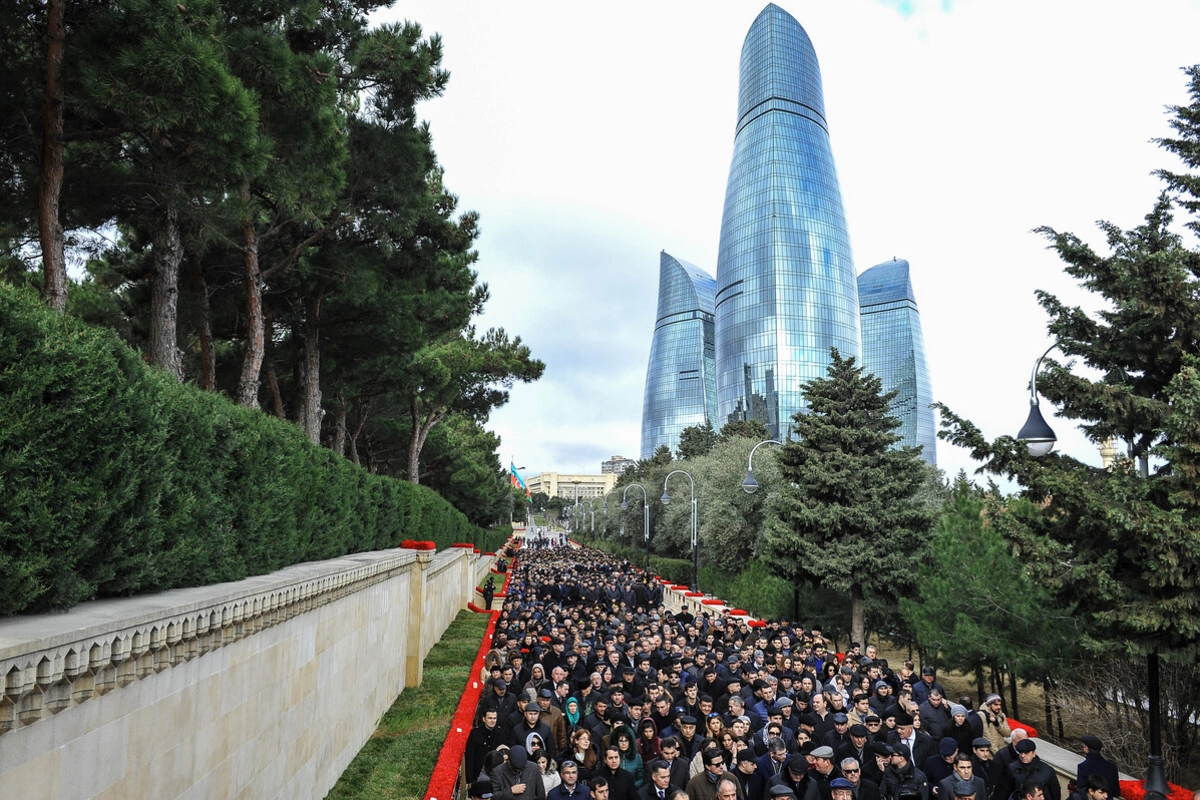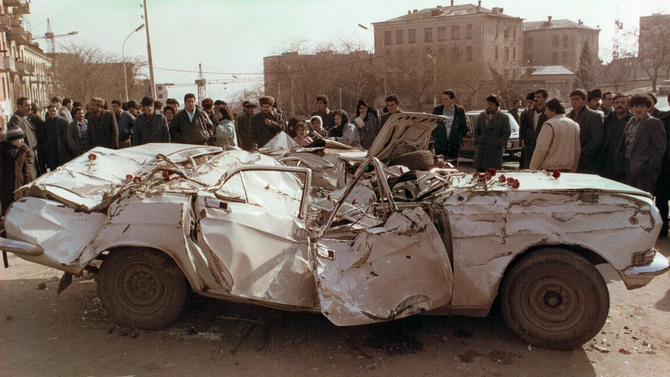
On January 20th, Azerbaijan mourns at least 133 civilians brutally mown down in 1990 on the streets of Baku by Soviet troops.
The Baku Flame Towers overlook Martyr's Alley, lined with the graves of those killed on January 20th, 1990. Image: Ruad/Shutterstock
On a prominent ridge that overlooks the bay from the southwest corner of central Baku, the dazzling Flame Towers are linked to a much more understated eternal flame monument. Between the two runs a pedestrian lane called 'Shehidler Xiyabani' (Martyrs’ Alley). As you might guess from the name, the route is lined by graves – as it had been back in 1918 before those were unceremoniously bulldozed into a new park during the Soviet era. The cemetery was reclaimed in 1990 to lay to rest the victims of ‘Black January:’ a ruthless attack on Baku by the Red Army on January 19-20.
According to official data, at least 133 civilians were indiscriminately killed by soldiers who were, at this point, still fellow Soviet citizens. Ostensibly this was Moscow’s attempt to ‘restore order’ in the city after horrifying scenes between January 13th and 17th. At least 45 Baku Armenians had been killed, and the homes of hundreds more left ransacked or gutted: part of tit-for-tat inter-ethnic violence that had been already spiralling out of control for two years. This would eventually lead to the First Karabakh War.
However, Baku was reportedly calm on the evening of January 19th when the Red Army arrived and started their killing spree. Tanks were seen to roll straight across cars crushing the passengers inside. One report told of a father and his nine-year child being shot on a bus while returning from a wedding. Some peaceful demonstrators who appeared on the streets were also shot. Soldiers even opened fire on ambulances.

On January 19-20, Soviet tanks drove over citizens' vehicles, sometimes crushing those inside. Image: Wikimedia Commons
The broader geopolitical context of Black January is important. This was just a couple of months after the fall of the Berlin Wall and the domino-like collapse of pro-Soviet regimes in Eastern Europe. Moscow, its troops recently withdrawn from defeat in Afghanistan, would have been nervous of contagion. Pro-independence movements taking hold in republics within the USSR itself would have been a significant concern. Then Soviet-leader Mikhail Gorbachev might have talked of perestroika (reconstruction) and glasnost (openness), but January 20th made it evident that under his watch, the union was still capable of using severe measures to enforce its control. The attack on Baku proved counterproductive. Far from forcing Azerbaijanis back into line, Black January caused such revulsion that lifelong Communist Party members started turning against the system, many making a public display of setting fire to their party IDs.
Black January was truly black in that for 40 days of mourning, Baku draped its balconies and windows in black material while schools and workplaces closed. Essentially, the attempt to crush any nascent ideas of Azerbaijani sovereignty ended up doing the opposite. The very next year, 1991, the USSR was history and Azerbaijan was independent. In some limited way, those who died on January 20th live on as unwitting icons of this unexpected rush into independence. Their memory is still mourned on this anniversary by thousands of Bakuvians who take red carnations to Shehidler Xiyabani and observe a minute’s silence.
Share on social media